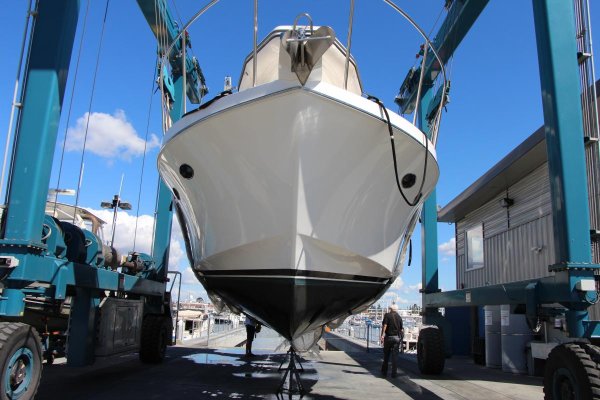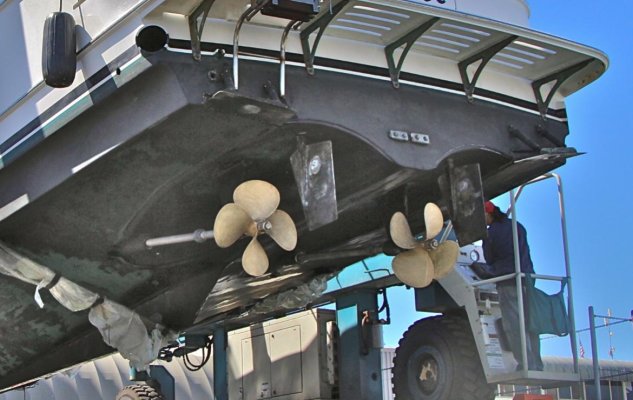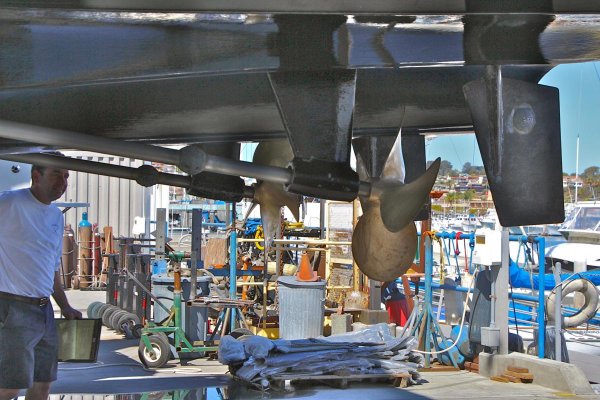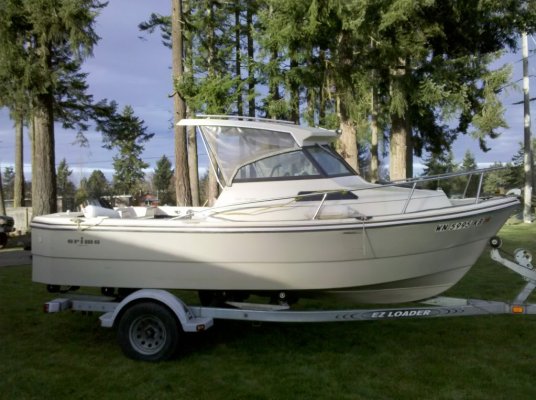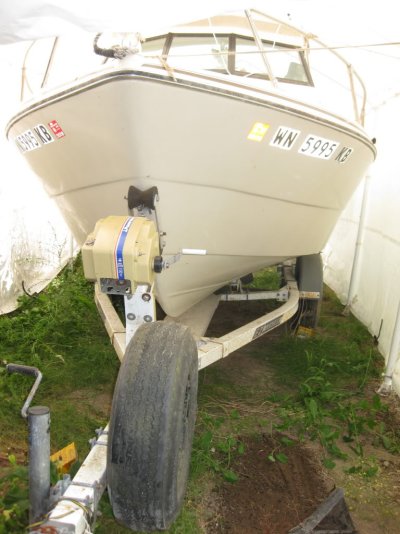Generally, the bigger and flatter it is, the better for generating lift. A flat bottomed skiff is the extreme example of this. It is also the extreme example of the way I used the term "efficient" above. The disadvantages of a flat bottom skiff are obvious...namely the ride!!!.
John--- I fully understand what you're getting at. Our 17' Arima fishing boat is a beautiful example of the compromise dilemma faced by every boat designer. Mr. Arima, a former Bayliner engineer (?) decided to strike off on his own back in the late 70s or early 80s. His goal was to create a trailerable fishing boat that could be towed behind the smaller pickups as well as mini-vans that were becoming popular at the time, be ideally suited for use in Puget Sound waters, and be able to be driven with less horsepower than the comparable fishing boats of the time.
As people who boat here know, we don't have swells to deal with but we do have wind waves which are often fairly steep-sided and close together even if they are a just a foot or two high.
So he gave his design a deep forefoot (for this type of boat) to cut the waves. The hull then transitions rapidly to a very mild V (rocker if you will) in the afterbody with a hard chine. So a good two-thirds of the bottom is an efficient planing surface.
The resulting boat does exactly what Mr. Arima intended it to do. Its high bow and sharp, deep forefoot does a great job of cutting through the waves rather than riding up and over them. And the planing surface aft of that does a great job of lifting the boat to travel fast and efficiently over the water. His first two models were the 15' and 17.'
But..... Mr. Arima's compromise is a boat which, when put on the plane in rougher water can pound your teeth out and worse, when the waves are taken at an angle has a habit of pounding hard on the upwind (or up-wave) side at the chine. So in these kinds of conditions, you slow down and mush through it.
What I find interesting is that, apart from the absence of a keel and nearly plumb stem, the underbody of our Arima is not unlike the underbody of the hull on our GB. The Arima has a bit more V-at the stern than the GB and it has lifting contours toward the front to help the boat get on plane, but otherwise the basic underbody contours are quite similar in basic concept.
The photos are not of our boat--- I don't have any of it out of the water-- but are from an ad for one on the web and is the same model and vintage we have. All Arimas, from the 15' up to the 22' use this same hull form although it's had details tweaked over the years.

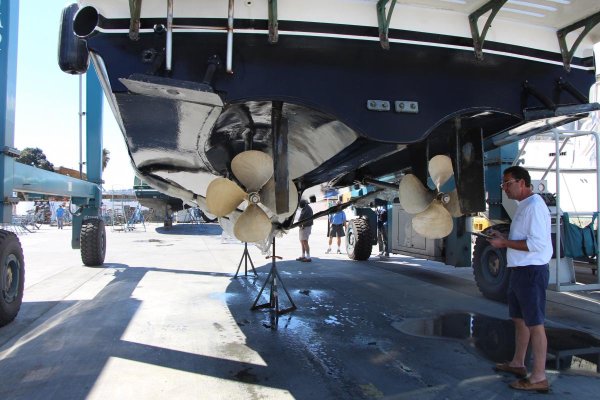
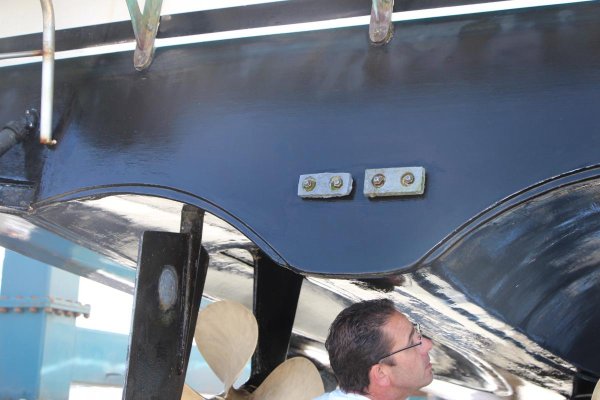
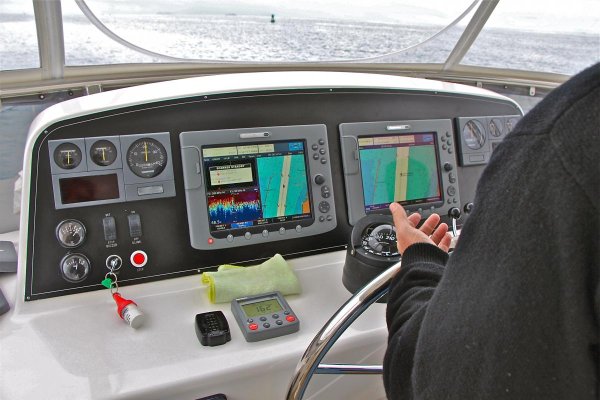


 Even with 500 gals of diesel and 150 gals of water, (which she didn't have) plus some personal belongings she shouldn't go over 40,000#.
Even with 500 gals of diesel and 150 gals of water, (which she didn't have) plus some personal belongings she shouldn't go over 40,000#. 